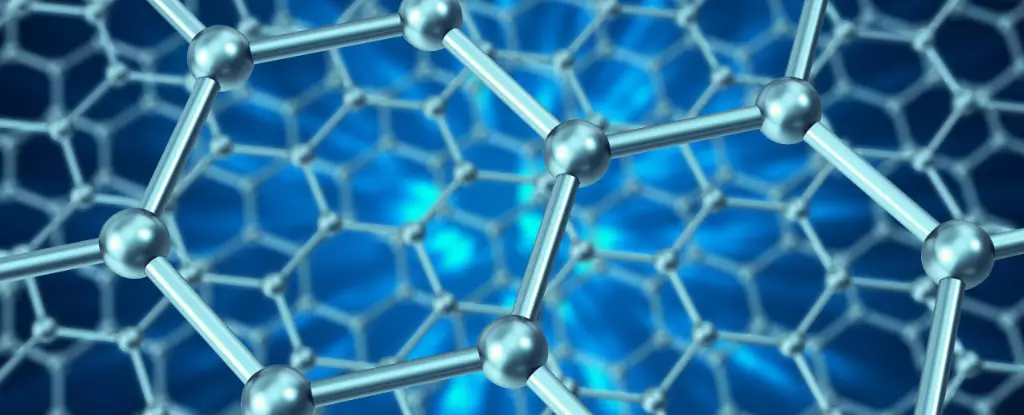Graphene, a remarkable two-dimensional material composed of a single layer of carbon atoms, has garnered significant attention for its superior electrical and mechanical properties. Its honeycomb lattice facilitates the free movement of electrons, making it an excellent conductor of electricity. Researchers across the globe are continually investigating the unique behaviors exhibited by electrons in graphene, especially when subjected to specific structural modifications. A collaborative study by institutions from Canada, the United States, and Japan has recently unearthed an extraordinary state of matter in the electron dynamics flowing through twisted graphene layers, which has profound implications for quantum computing and superconductor technologies.
The Moiré Effect: A Structural Marvel
Central to this study is the moiré effect, a phenomenon that arises when two periodic structures are overlaid at an angle. As researchers manipulate the configuration of graphene sheets—twisting them into complex arrangements—this setup induces unique electronic properties. This geometric manipulation results in a distinctive landscape that disrupts the conventional paths electrons would otherwise follow. Instead of flowing freely, electrons encounter a physically altered topology that changes their velocity, sometimes even causing them to spiral or twist along the material’s edges.
This altered geometry fundamentally transforms the way electrons behave, leading to the emergence of a topological electronic crystal. Unlike traditional Wigner crystals, which usually exhibit fixed structures and immobilized electrons, the new crystalline state allows for conductivity despite an ordered electron array. This duality of order and conductivity poses fascinating questions for physicists and opens new avenues for exploration.
The discoveries stemming from this research hold remarkable potential for advancements in quantum technology, particularly in the realm of qubits—basic units of quantum information. The pursuit of qubits with enhanced stability and lower susceptibility to interference is crucial for the development of reliable quantum computers. The newly observed behavior of electrons in twisted graphene layers suggests pathways for creating qubits that leverage the principles of topology, offering improved resistance to decoherence compared to conventional particle-based qubits.
Moreover, the intriguing quantum Hall effect, a phenomenon associated with quantized resistance, can also be further understood through these new states of topological activity. The ability to manipulate electron states in a material as flexible and versatile as graphene gives researchers an exciting platform to innovate and explore varied quantum states, pushing the boundaries of our comprehension of quantum mechanics.
Beyond the immediate implications for quantum computing, the findings challenge existing paradigms in material science regarding electron behavior in crystalline structures. Graphene serves as a perfect experimental ground for examining the interplay between geometry and electronic properties. As scientists delve deeper into this newly discovered realm, they are likely to uncover more exotic phases of matter and broaden our understanding of how materials can be engineered for specific electrical, thermal, and mechanical properties.
Given that these twisted graphene stacks exemplify how structural manipulation can yield unexpected outcomes, this research paves the way for innovative materials that could revolutionize various industries, from electronics to energy storage systems. The bizarre zoo of electron quasiparticles theorized to emerge from future experiments tethered to these concepts sparks curiosity regarding the practical applications that await in this unrealized frontier.
The revolutionary study on twisted graphene layers reveals a captivating interplay between structure and electron dynamics, presenting an unforeseen state of matter that defies traditional expectations in physics. As researchers continue to investigate this new electronic crystal phase and its properties, the potential for breakthroughs in quantum computing and the development of novel electronic materials becomes increasingly tangible. The world of twisted graphene embodies the rich possibilities that lie ahead in material science, urging physicists and engineers alike to explore further, innovate, and redefine what is conceivable in the quantum realm. As science continues to advance, the journey into the labyrinth of electrons and graphene promises to yield extraordinary discoveries that will shape the technologies of tomorrow.


Leave a Reply